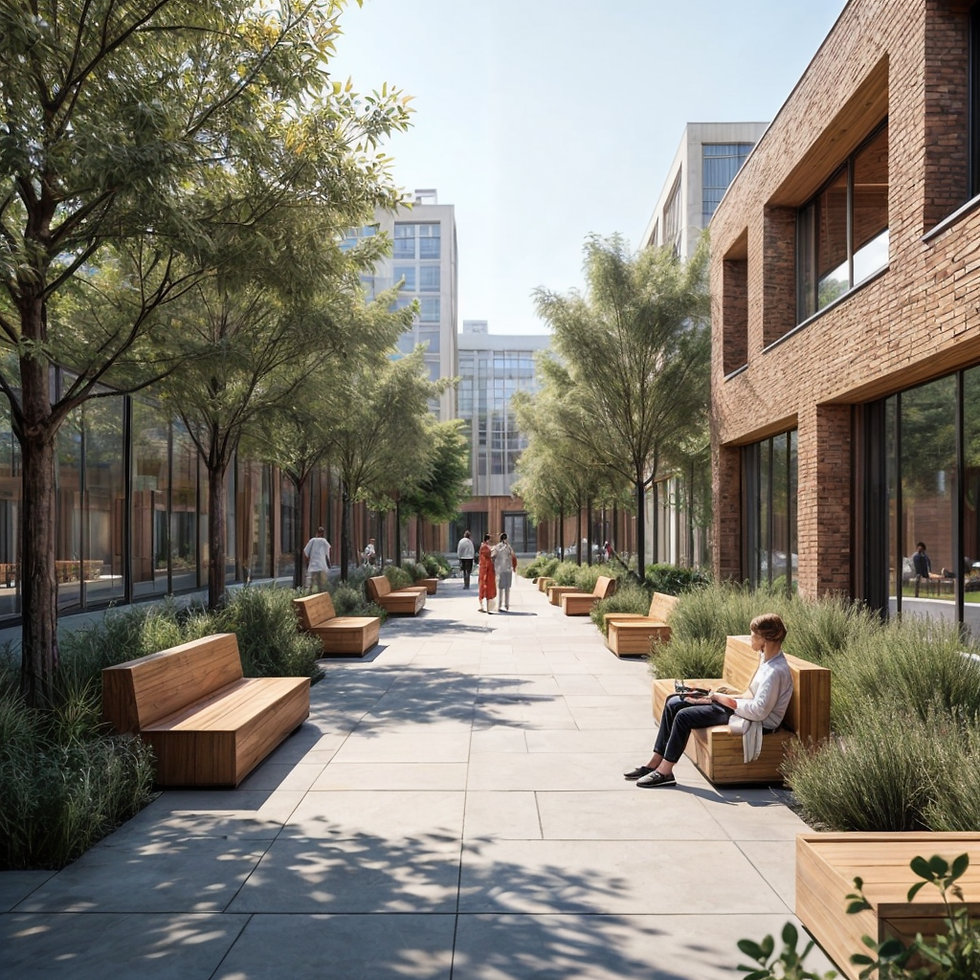Social Architecture: Spaces That Connect People
- Coronel Associates

- Dec 23, 2024
- 3 min read

Social architecture focuses on designing spaces that go beyond meeting functional and aesthetic needs to foster interaction and strengthen relationships among individuals. This architectural approach is essential for building cohesive and resilient communities.
Promoting Social Interaction

Well-designed architectural spaces can act as catalysts for social interaction. According to experts, open and welcoming meeting areas such as courtyards, spacious living rooms, and communal zones are ideal for encouraging communication and bonding. These places become gathering points where people can share meaningful moments, strengthening their relationships.
Design Strategies

To achieve these goals, various design strategies are employed, including:
Multifunctional Spaces: Integrating multiple activities into a single area facilitates informal and spontaneous interactions, such as combining daily activities with rest or recreational zones.
Flexibility and Personalization: Allowing users to personalize their environments increases their sense of belonging and encourages frequent use of shared spaces.
Spatial Programming: Carefully arranging activities within a building maximizes opportunities for social interaction by considering how people move and interact in the space.
Key Features of Common Spaces for Social Interaction

To encourage social interaction in common spaces, several features should be prioritized:
Flexibility and Adaptability: Spaces should be multifunctional and adaptable to different activities and needs, using modular furniture that can be rearranged for various events.
Universal Accessibility: Spaces must be accessible to everyone, regardless of age or physical ability, incorporating accessible routes, appropriate furniture, and removing architectural barriers.
Diverse Uses: Mixing recreational, commercial, and cultural activities in one location attracts a variety of people and fosters casual encounters. Jane Jacobs emphasizes that the juxtaposition of uses ensures a constant presence of individuals, increasing opportunities for social interaction.
Visual and Physical Connections: Spaces designed with clear paths and open links between different areas encourage communication and interaction.
Comfortable and Attractive Environments: Aesthetic and comfortable spaces, with proper lighting, greenery, and cozy furniture, invite people to linger and improve their overall well-being.
Active Programming: Hosting regular events and activities, from workshops to cultural events, engages the community and promotes participation.
Natural Elements: Incorporating nature, such as gardens or green spaces, creates a relaxing environment where people can gather and interact.
Casual Gathering Spots: Strategically placed benches or communal tables facilitate spontaneous interactions among users.
Inspiring Examples
Projects like the Absalon Community Center in Copenhagen showcase how repurposing buildings can transform spaces into vibrant hubs for the community. This center hosts activities ranging from yoga to film screenings, creating an inclusive and dynamic environment.

Another example is Monterrey's Distrito TEC, where urban planning involved residents' input, resulting in a space that reflects their needs and fosters social interaction.

Community-Centric Design by Coronel Associates

At the heart of this architectural approach lies a clear goal: to create spaces that promote interaction and strengthen community bonds. This project goes beyond functional needs to reimagine how people relate to each other in a designed environment.
A Space That Invites Connection:
The warm façade, paired with green areas, accessible pathways, and strategically placed urban furniture, invites spontaneous interaction. Elements like wooden louvers and large windows foster visual and physical connections that energize the space.
Encouraging Casual and Community Gatherings:
Designed to accommodate diverse activities, this multifunctional space includes relaxation areas, commercial zones, and recreational spots that attract people with varying interests. Vegetation and comfortable furniture create a relaxed ambiance where informal gatherings naturally occur.
Innovation and Aesthetic Harmony:
The use of modern materials and thoughtful activity distribution prioritize both functionality and aesthetics. This balance creates a space that not only meets daily needs but also inspires well-being and creativity.
This project exemplifies how architecture can drive social cohesion, designing environments that are not only practical but also enrich the human experience by connecting people.
In a world where technology often isolates us, social architecture serves as a powerful reminder of our collective nature. Designing spaces that inspire interaction and strengthen relationships is not merely about aesthetics or functionality—it's an investment in the human fabric that builds resilient communities.
From shared moments to spontaneous connections, social architecture is more than buildings; it's the catalyst for meaningful interactions and the heart of human connection. It’s an ongoing invitation to live, relate, and thrive together.
